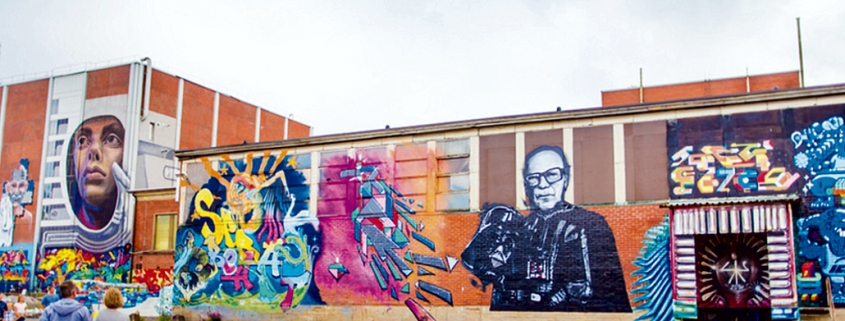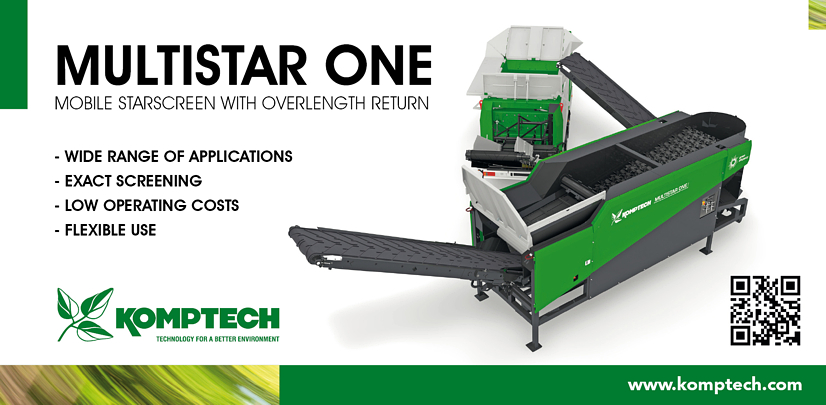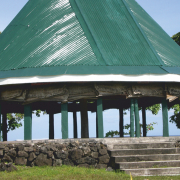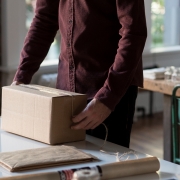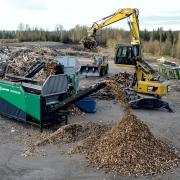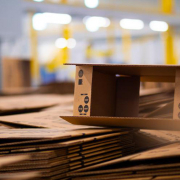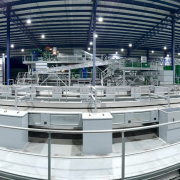Paper Mill Sludge Generates Business in Finland
The City of Tampere is looking for a solution for the processing of paper mill sludge.
In 2014, the City of Tampere purchased some of the lands and waters previously used by the forest industry to build the future city district of Hiedanranta. The purchased cove in Näsijärvi came with an enormous mass of wood-derived waste materials, also known as paper mill sludge or “zero fiber”. Now, Hiedanranta is serving as a development platform for projects aiming to find usage for paper mill sludge that would be financially sensible and clean up the water areas.
In November 2018, a seminar on the procurement process of handling and utilization was organized for potential operators; 150 participants signed up to hear about the paper mill sludge experiments underway in Hiedanranta, among other topics. The research on the value chain of paper mill sludge has yielded preliminary, technically and financially promising results on utilizing sludge for the production of chemicals and biogas or methane and as a soil conditioner or fuel after quick composting, the City of Tampere gave account. The research would continue – among other things – with estimates on whether profitability can also be expected for the projects at an industrial scale.
According to a research, the lakebed in Lielahti contains 1.5 million cubic meters of paper mill sludge, covering an area of 35 hectares with sediment that, in places, is several meters thick, the City of Tampere informed. The municipality has acquired the area along with its environmental responsibility, and the goal is to find a financially and environmentally sustainable processing solution in order to make the area viable for recreational use. “At the moment, the paper mill sludge causes unpleasant odors at times and hinders the lake’s ice cover in winter and is, therefore, not suited as a milieu for the planned housing development.” The plan is to remove the sludge at least from the vicinity of the shore to enable the recreational use of the area.
Operators interested in paper mill sludge
The City of Tampere has attracted a great deal of interest with its desire, and several operators and research institutes have expressed their willingness to provide their know-how, participate in the project and test their own methods.
According to Project Development Director Reijo Väliharju from the Hiedanranta development program, various methods for processing paper mill sludge have already been studied. The participants considered both processing the sludge on-site in Hiedanranta and delivering it to waste processors, energy companies and other material refiners. The mass-stabilization of paper mill sludge and utilizing it in park infrastructure has also been examined.
Stored at the bottom of a lake for decades, the paper mill sludge, its characteristics and potential processing methods were being studied by several businesses, experts, research institutes and higher education institutions.
City in two research projects
At the moment, the City of Tampere is running two publicly funded research projects related to paper mill sludge: the “Blue Bioeconomy” project for utilizing the paper mill sludge in the lakebed of Hiedanranta, also known as the “Zero Waste from Zero Fiber” project, and the “CircVol 6Aika” project with its paper mill sludge challenge and building a business network.
The “Zero Waste from Zero Fiber” project – aiming to utilize the paper mill sludge in the lakebed of Hiedanranta – studies microbiological processing methods designed to refine the sludge into as high-value products as possible. Depending on the processing chain, paper mill sludge could thus be refined into organic chemicals, biogas and soil conditioner, among other things. The project has been funded by the City of Tampere, and the “Blue Bioeconomy” priority project of the Finnish Ministry of Agriculture and Forestry managed by the South Savo Center for Economic Development, Transport, and the Environment.
The “CircVol 6Aika” project aims to utilize large-volume secondary flows and landmasses in the urban environment. The project is part of the cooperation project for sustainable urban development between the six largest cities in Finland – Helsinki, Espoo, Vantaa, Tampere, Turku, and Oulu – and has been funded by Leverage from the EU 2014–2020, the European Regional Development Fund and the Helsinki-Uusimaa Regional Council.
Goal: Solution path in 2019
In 2019, the City of Tampere aims to find a solution path for the processing of the sludge. As reported, cooperation with companies is vitally important. According to the information, the businesses should be given the opportunity to discuss their views on the used procurement process and to offer necessary solutions. “We want to have an open and diverse dialogue with businesses and developers to find the best solutions for paper mill sludge. The seminar featured the most up-to-date information on the processing options which we hope inspires the operators to find new business opportunities,” Project Development Director Reijo Väliharju was cited.
A city district of up to 25,000 residents and 10,000 businesses is planned in Hiedanranta with connections to the upcoming tramway line. The goal is to develop the area into a carbon-negative district that supports sustainable environmental development in an intelligent manner. An open-minded culture of experimenting is one of the means of achieving this goal.
___________________
100 years of forest industry
The future district of Hiedanranta in Lielahti used to accommodate forest industry that operated in the area for over a century until 2008. The sediment of Näsijärvi lake in front of the former paper mill has accumulated wood-derived waste fibers from the pulp industry. The sludge was first dumped directly into the waters as sewage and later submerged in a banked-up basin for several decades.
The accumulation of sludge reflects the previous decades’ more lenient attitude towards industrial waste and, in fact, the operations always complied with the legislation of that time. Similar paper mill sludge deposits can be found elsewhere in Finland as well as around the world.
“The challenge is both extremely demanding and very interesting, and its solutions play a substantial role not only in Tampere but possibly around the world, as paper mill sludge is not unique to the waters of Näsijärvi. Success requires mutual problem-solving between businesses, the city, and universities as well as combining different types of expertise and viewpoints,” Associate Professor Leena Aarikka-Stenroos from Tampere University of Technology was quoted, one of the participants of the research cooperation and process.
___________________
www.tampere.fi/en/hiedanranta
Source: City of Tampere / Photo: City of Tampere
GR 12019

